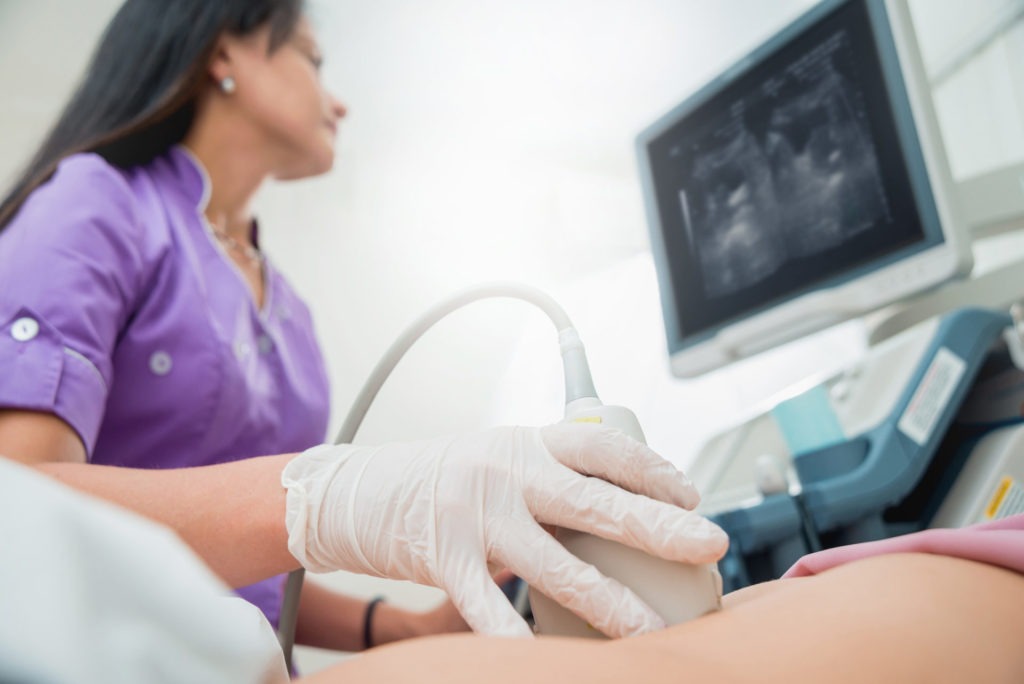It is a truth widely acknowledged that women attract a gender payment gap for many products and services. Haircuts, clothing, and beauty accessories are frequently more expensive when marketed to women, compared to an identical product or service aimed at men.
What is surprising, however, is that this gender payment gap extends to medical services.
Due to medicare rebates, set by the government and applicable in every state and territory in Australia, women may end up paying significantly more for medical procedures and investigations, than comparable services for men.
A clear example of this gender bias can be seen in the payments assigned to ultrasound services.
A man with a lump in his testicle, for example, and a woman with a lump in her breast, may both be referred by their GP for an ultrasound. Both examinations require ultrasound scans of similar complexity.
However, inexplicably, the ultrasound of the scrotum attracts a higher government rebate than an ultrasound of a breast.
Given nearly 80 percent of imaging services are provided in the private sector, this creates a dilemma. Either private companies bulk bill and accept they will earn less for their time when imaging a breast rather than a scrotum. Or, more likely, they pass this cost on to the consumer.
In other words, women will pay more for their ultrasound than men.
An investigation by The Breast Cancer Network of Australia found that nearly two third of women were paying out of pocket for their breast ultrasounds, with out of pocket costs for various imaging and diagnostic tests often reaching several thousands of dollars.
A second example of the medicare gender payment gap can be seen in the rebates assigned to pelvic ultrasounds.
The overwhelming majority of pelvic ultrasounds are performed for people assigned female at birth. This is not surprising, given the range of female specific pelvic organs and conditions that can lead to pain, bleeding, infection, inflammation and cancer.
Between the bladder and bowel of a female pelvis lie the vagina, the cervix, ovaries, fallopian tubes and various pelvic spaces and ligaments. Things can certainly get complicated.
For the highest quality diagnostic scans both an external (trans-abdominal) and an internal (transvaginal) examination are usually recommended. This involves the cleaning and sterilisation of two different ultrasound probes as well as the extra time required to change and empty the bladder between scans. Time is needed for respectful explanation and consent, as well as often a second staff member to chaperone for the internal scan.
It would therefore be reasonable to expect that a higher medicare rebate would be paid for imaging an entire female pelvis than a single scrotum.
Not so. Despite being more complex and taking more time, staffing, and equipment, an ultrasound of the pelvis is worth less medicare money than a scrotal scan.
Again, it is women who are expected to pay the difference and are left out of pocket.
The gap widens when complex conditions such as endometriosis are added to the picture.
Endometriosis, a chronically under-recognised and underdiagnosed condition, currently takes an average of seven years to be correctly diagnosed. Advances in ultrasound mean that highly trained staff can now assess for endometriosis lesions using this safe non-invasive technology.
However, recent Australian research showed that a dedicated endometriosis scan takes almost double the time of a routine pelvic scan. Currently, there is no extra rebate for this specialised service.
The extra time cost required to complete an already under-funded pelvic ultrasound and make the crucial diagnosis of endometriosis is born, once again, by the individual woman.
The final example relates to ultrasounds in the first trimester of pregnancy. Arguably one of the most emotive and life-changing ultrasounds, a first trimester ultrasound can deliver disappointment, hope, joy, devastation, or news of a medical emergency in the form of an ectopic pregnancy.
Despite this, sonographers will receive less than a third of the rebate they would expect from examining a male scrotum.
In other words, the government pays a sonographer more money to scan one man’s scrotum, than they do to perform three internal early pregnancy ultrasounds on three different women.
These examples highlight just one area where the gender payment gap exists in medicine.
Other areas of concern include the remarkably low rebates for insertion of a mirena or other intrauterine device for contraception or heavy painful periods, as well as the complete lack of a specific rebate for managing medical termination of pregnancy.
Not only do medicare payments represent a fraction of the resources that are necessary to provide these services, but they are rebated at significantly lower rates than non-gendered GP services such as removal of skin lesions.
Subsequently, GPs are forced to either charge women significant out-of-pocket costs, or run at a loss for providing these services.
Often it is simply not viable for GPs to provide procedural women’s health services. This has significant implications when women are then unable to access safe, routine, reproductive care in their local area.
In addition to access restrictions, the financial implications of the gender payment in medicine gap can be profound. Women are already subject to various baseline financial penalties including the gender pay gap and the superannuation gap.
With cost of living pressures increasing, unexpected health costs may be out of reach for many women. These barriers are more likely to exist for women from culturally diverse backgrounds, those with complex socioeconomic circumstances, women with caring responsibilities and women living with a disability.
Seen more broadly, the gender payment gap is a clear example of the way in which medicine has preferentially focused on male illness.
For centuries our understanding and treatment of the male body has been considered a priority. Women’s bodies and illnesses have been an after-thought in this medical gender paradigm, and subsequently, research and attention towards female predominant diseases, such as endometriosis and pregnancy complications, has lagged behind.
Thankfully, awareness of the gender gap in medicine is increasing.
However ongoing engrained structural biases, such as these clear medicare rebate gaps persist.
We must make a concerted effort to identify and eliminate any structural gender disparity in medicine if we wish to move towards a future that is accessible, affordable, safe and free from gendered health inequality.



